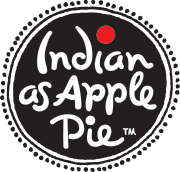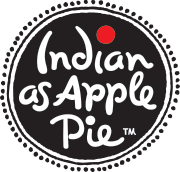February 28, 2013
Lentils are the heart of Indian cuisine. Regardless of where in India you live, or what kind of household income you have, there’s one thing you have in common: lentils – tiny little dried seeds that grow in a pod and pack a nutritious punch. In North India, they are prepped with earthy cumin seeds and cilantro, while in the South their flavors are heightened with slightly bitter mustard seeds and curry leaves. Regardless, when you get a bowl of lentils in your day you know you are also getting a plant-based protein that’s not only delicious but clean and healthy.
When you’re vegetarian, or vegan for that matter, most Americans worry about your protein intake. I’m here to tell you – you still get protein. It’s a little different than animal protein, though. Beans and lentils are one of the top ten protein-rich foods out there along with chicken breast, pork, tofu, and dairy. The way protein from beans, lentils, and peas (all under the umbrella category of legumes) differs, however, is that it’s not what’s called a complete protein. Meaning, there are a few essential amino acids that you can only get by combining your lentils with rice OR sprouting your lentils first.
Complete proteins are available readily in meat, one reason why folks point to meat as an easy way to get them. I always say you lose and gain (or don’t gain) something, however, when you choose legumes over meat. When you lose the few essential amino acids in lentils by themselves, you also DON’T gain the downside of meat: cholesterol. So, you be the judge of how you want to play your daily diet game. I’m not judging for you. Just know what you are eating and why – and this may change on any given day. It’s cool. I am not there to take notes – nor should anyone else for that matter! Enjoy your food and meals.
Now, the nutritional breakdown of lentils is interesting as well. One cooked cup has about 230 calories, 18 grams of protein, 40 grams of carbohydrates, 16 grams of fibre, and less than one gram of fat. Awesome, right? Know that although there are carbs in lentils – they are slow burn carbs that don’t immediately turn to sugar in your blood stream, called complex carbs. Also keep in mind that lentils are high in iron, potassium, folate and choline. My information is a standard compilation of facts from the USDA and other websites about legumes and especially lentils. Take this info as a springboard to discover and research more on your own. Remember, I am not a doctor or a nutritionist, and so take anything I tell you and always run it by the proper professional in your life!
The beauty of getting lentils, beans, and peas (i.e. legumes) into your daily diet is that you get added protein and fiber for cheap, cheap, cheap!
In India, even the rikshawalla living in a makeshift hut by night and cycling passengers during the day, eats well and has energy and muscles because he comes home to a meal of lentils and rice or homemade Indian bread. So, this nonsense in the West that eating healthy costs more than eating fast food is a farce – if you know what to eat. Go buy a bag of lentils. You’ll see that it will not only last you and feed your family seemingly forever, but it will also be an easy and healthy addition to your daily meals. Buy them in an Indian grocery store and you’ll get them for even cheaper. One of my life goals is to arm every home in the inner city with a bag of lentils, a slow cooker, and recipes. Anyone in?
Though most lentils in India are cooked down to a porridge-like consistency and served almost like a soup on the side to most meals, one of my husband’s favorite dishes is dried lentils, or Sukhi Dal. I still remember my shock after getting married and him raving over my mom’s version of it. I never made it for him, because it was never one of my favorites growing up. Boy, did I learn how to make it and fast. What I also learned is that it’s a perfect dish for the kids. I often will make a large portion and set it aside for the week as a filling for pitas, wraps, and even dolloped over salads.
This dish cuts back on the water and cooks the lentils so they are just soft enough to bite into, but still maintain their shape. Although in India they traditionally use dhuli urad dal for this dish (the tiny black lentils that are skinned and split), I love also using dhuli moong dal (the green lentils, that are skinned and split – and then look yellow). (In Hindi, dhuli means washed, and thus refers to a lentil that has been ‘washed’ of its outer skin.)
These lentils are then spiced to perfection. I typically don’t like tomatoes in this dish, but feel free to add one diced tomato toward the end (the way my husband prefers it.)
Enjoy!
Sukhi Dal: Dried Lentils makes 7 cups
2 cups dried, split, and skinned moong dal (yellow lentils), cleaned and washed
2-3 bay leaves
2 whole cloves
1 cinnamon stick
3 whole dried red chiles
1/2 teaspoon turmeric powder
3 cups water
3 tablespoons ghee or oil (I use grapeseed)
pinch of asafoetida (hing)
1 teaspoon cumin seeds
1 medium yellow or red onion, diced (3/4 cup)
pinch of coarse sea salt
1 tablespoon grated or minced ginger
3 cloves garlic, minced or grated
4 green Thai chiles, stems removed, finely chopped (or chile of choice)
1 teaspoon dried mango powder (amchur)
1 teaspoon garam masala
1 teaspoon coriander powder
1/2 – 1 teaspoon red chile powder or cayenne
2 teaspoons coarse sea salt
juice of 1/2 lemon
1/2 cup chopped fresh cilantro
1. In a deep and roomy pot add lentils, bay leaves, cloves, cinnamon stick, dried red chiles, turmeric, and water. 
Bring to a boil. Turn heat down and simmer uncovered for about 11 minutes. Typically, a frothy film will form over the lentils in the beginning as they boil. Just skim it off and discard.
2. Turn heat off, put lid on, and let the lentils sit and finish absorbing the extra moisture for about 5 minutes. Carefully remove whole spices and mix gently. The lentils should be al dente – firm but not hard. Let them sit while you prepare the tarka (oil infusion) on the side. (See cooked lentils below…)
3. In a frying pan, heat ghee or oil over medium-high heat. When hot, add asafoetida and cumin. Cook until the seeds sizzle and turn reddish brown, about 40 seconds.
4. Add onion and pinch of salt. Cook until slightly browned, about 2 minutes. (The salt helps draw out moisture and helps the onion brown.)
5. Add ginger and garlic. Cook another minute, mixing. Add green chiles, mango powder, garam masala, coriander, and red chile. Cook a few more second, and then add this mixture to the lentils. (See tarka to the right…)
6. Add salt, lemon juice, and cilantro. Mix well, careful not to break the lentils too much.
Enjoy these amazing cooked and dry lentils on a wrap smeared with a little hummus and garnished with chopped onions, tomatoes, lettuce, and avacado. Or stuff in a pita and garnish. You can also eat it the traditional way with roti or naan.
Technique Time: Your standard ratio when cooking whole lentils on the stovetop is one cup lentils to 4 cups water. Pull back on the water if using split and/or skinned lentils. Use a little less if going into the slow cooker, as there will be no evaporation. Use less water if you want a thicker consistency. For faster cooking, soak the lentils in water for about 4 hours or more. Then, cut back on water when cooking as well by about a cup.
If you like this blog and that I keep it advertisement free, all I ask is that you please take a minute to help spread the word and ‘Like’ my Indian As Apple Pie Fan page on Facebook. Every ‘like’ gives you more pictures and cooking tips, while 20,000 likes by July wins me a bet with my publisher! Many, many thanks in advance. When I hit 2,000 likes I’ll give away a Spice Tiffin! …at 2,500 a cookbook…at 3,000 a spice tiffin..and so on and so on and so on. I LOVE giving stuff away. Shhhhhh…don’t tell the hubbie!
Comments will be approved before showing up.

